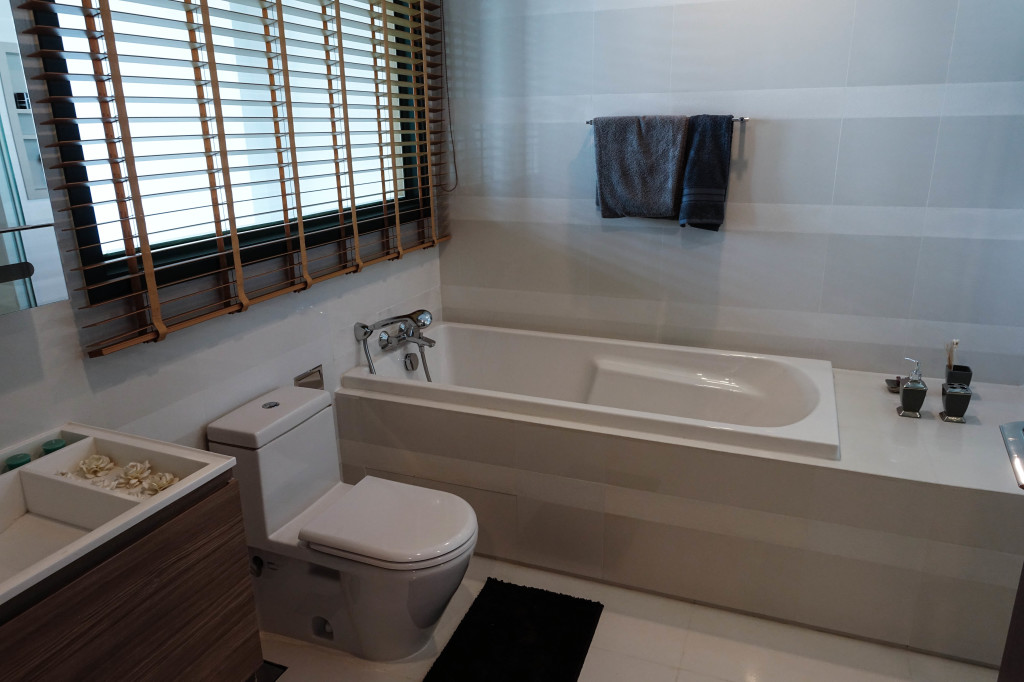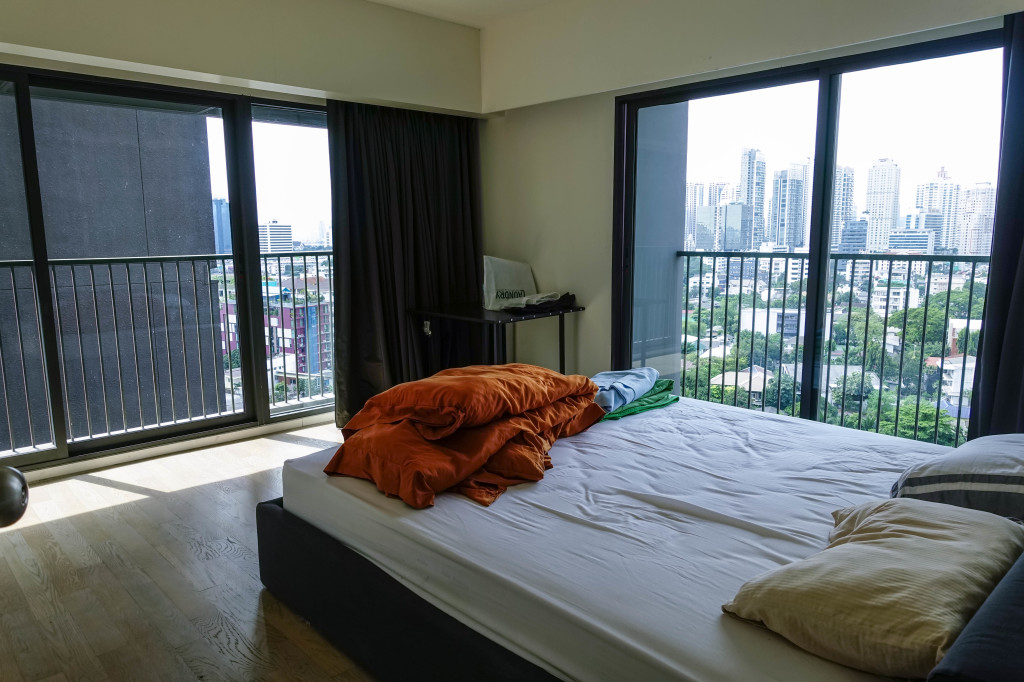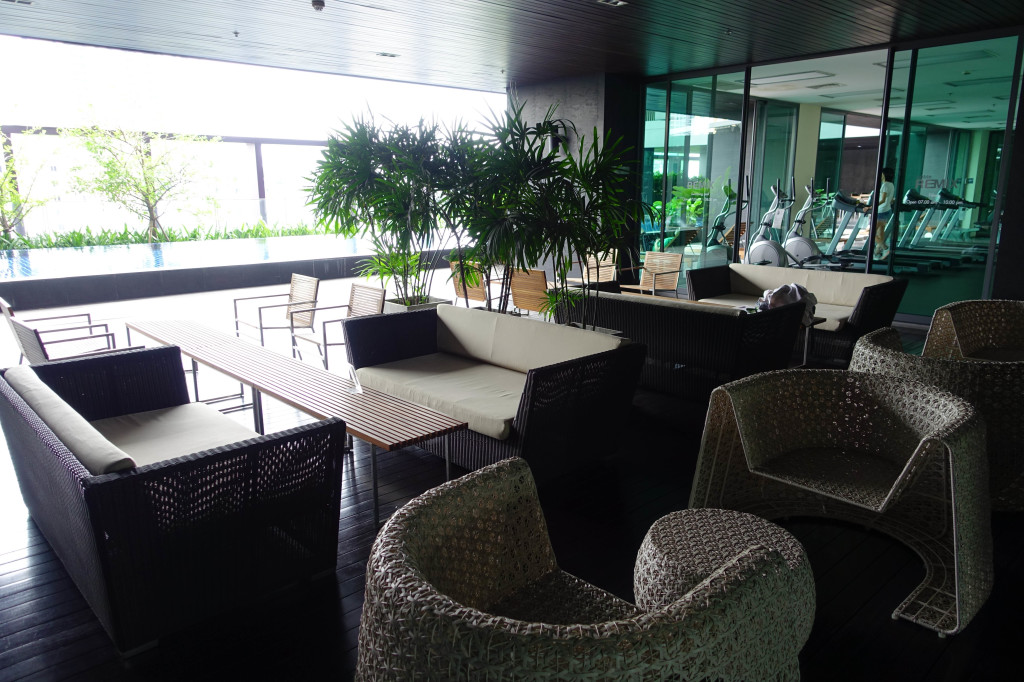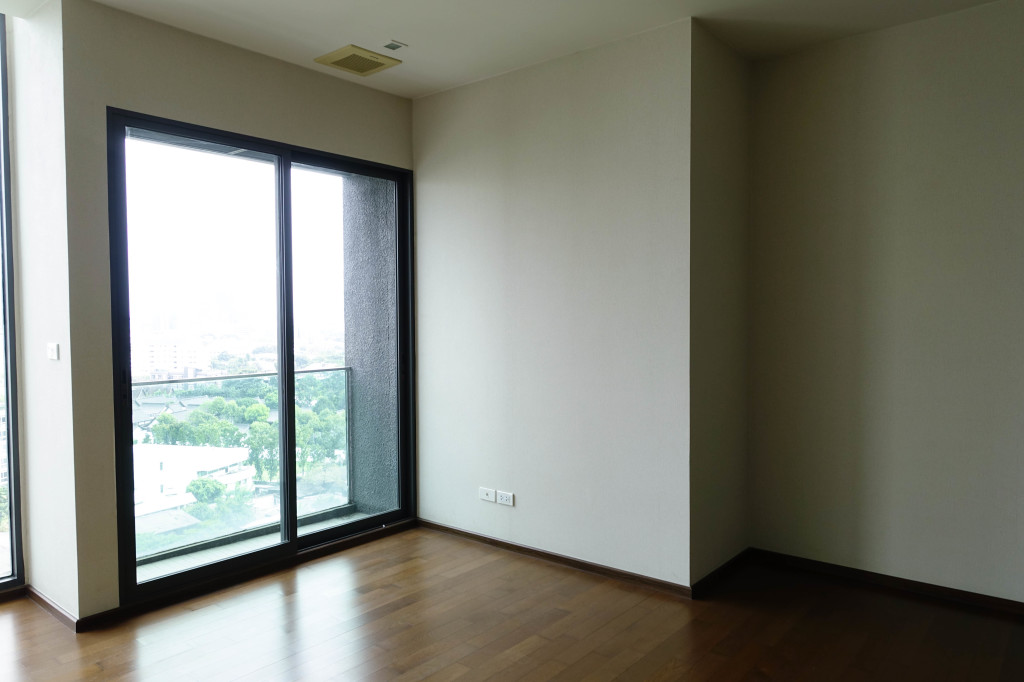When you ask Thai people about rich neighborhoods in Bangkok, you might hear Thong Lo uttered more than once. This neighborhood has been attracting foreign investors with beautiful luxury condominium projects and a bevy of upscale boutique shops and restaurants scattered around. You’ll never mistake this place for Beverly Hills. Walking around, you’ll still see sidewalk vendors hawking their food for 30 baht (~$1) in the shadows of the these towers, but life a few floors up is remarkably different.
I took a look at a few relatively affordable units for sale in two buildings near the Thong Lo BTS Skytrain station. There are luxury condos that are definitely offer much more in terms of size, amenities, and exclusivity, but I wanted to focus on stuff that might be in the price range of the average American.
25th floor 2br/2ba in Keyne by Sansiri
- Price: 16.4MB (~$547,000)
- Size: 81sqm (871sqft), 2 floors
- Monthly Maintenance: 57B/sqm ($1.90/sqm)
- Estimated Rental Yield: 5.85%
- Fully furnished
- Website: http://www.sansiri.com/condominium/keyne/en/
UNIT PHOTOS
COMMON AREA PHOTOS
12th floor 1br/1ba in Noble Remix 2A
- Price: 9.27MB (~$309,000)
- Size: 54sqm (581 sqft)
- Monthly Maintenance: 50B/sqm ($1.67/sqm)
- Estimated Rental Yield: 4.79%
- Partially furnished
- Connected to BTS Skytrain station
- Website: http://www.noblehome.com/condominium/remix2/en/home
Unit photos
Common area photos
9th floor Studio in Noble Remix 2B
- Price: 6.5MB (~$309,000)
- Size: 38sqm (581 sqft)
- Monthly Maintenance: 50B/sqm ($1.67/sqm)
- Estimated Rental Yield: 4.62%
- Unfurnished
- Connected to BTS Skytrain station
- Website: http://www.noblehome.com/condominium/remix2/en/home
UNIT PHOTOS
COMMON AREA PHOTOS
All buildings are not air conditioned in the hallways and elevators, although individual units all have A.C. This seems to be pretty standard practice at almost every luxury tier in Bangkok, but it can get a little bit warm for those of us not used to the hot, humid Southeast Asian climate.
Overall, the area seems to be growing so you might be okay with lower rental yields. Another benefit is that management fees are much lower here than for a similar condo in the United States. For the sake of comparison, a similar 2br/2ba in San Francisco would be about $1.6M and have a rental yield of 5-6%, but would come with a staggering HOA of ~$1000/mo. Obviously, SF and Bangkok are two very different cities, so you can’t really compare them directly, but these are just some numbers to look at.
If we take a look at the macroeconomic projections for Thailand in the next 5 years compared to the United States, we’ll see that GDP growth in Thailand in 2020 will be slightly higher than the States, but GDP PPP per capita remains much lower (as well as the delta) in Thailand than in the USA, so most of the appreciation in housing prices will likely arrive due to constrained supply (due to lack of land) and increased demand in hot areas.




















